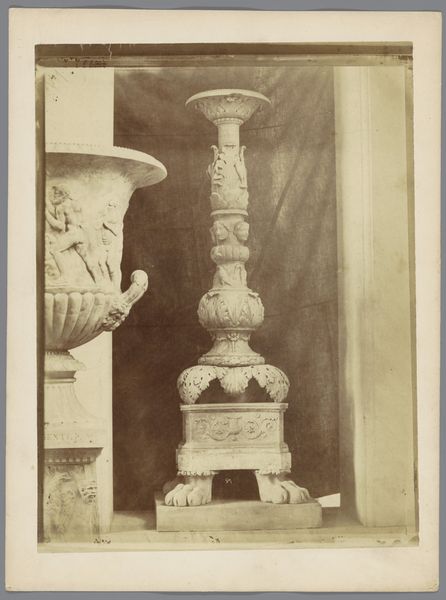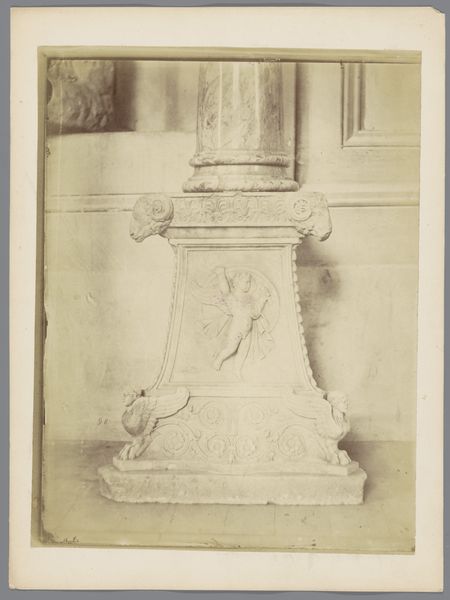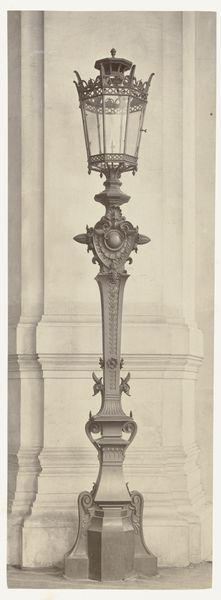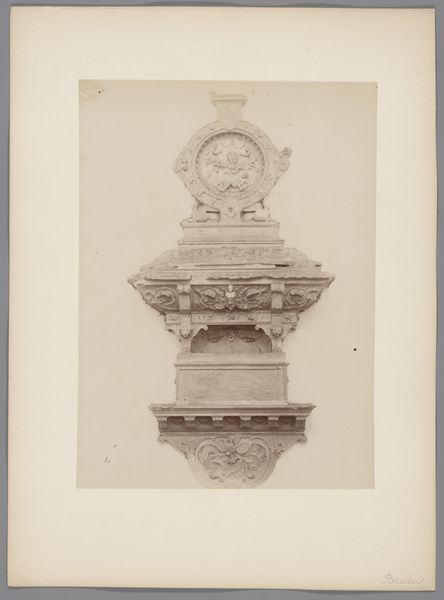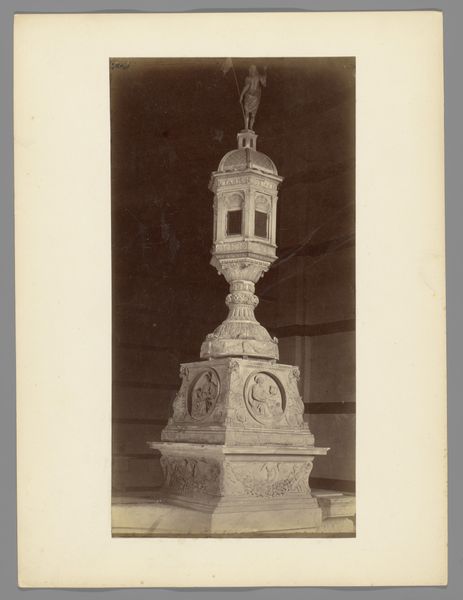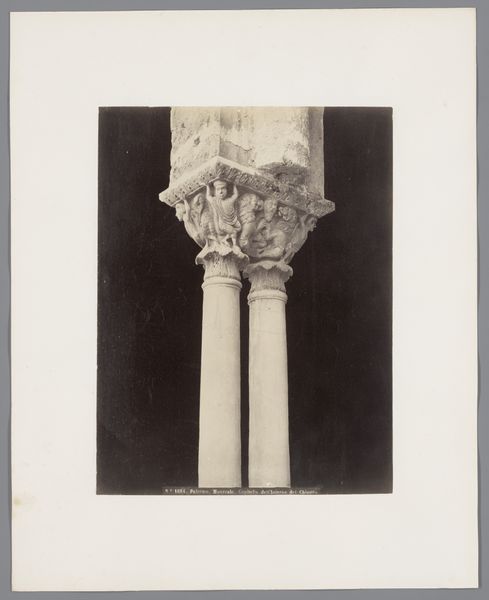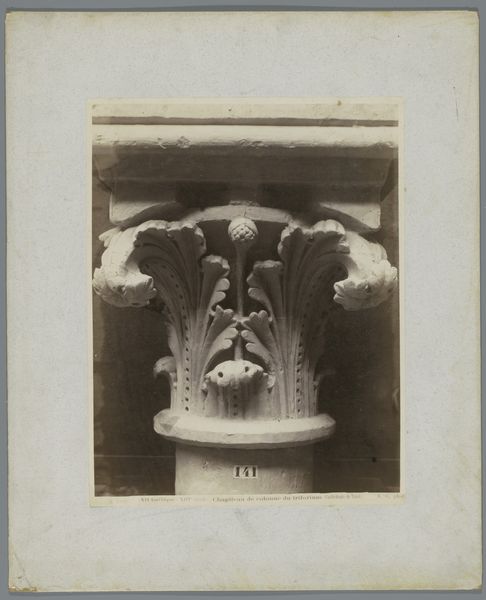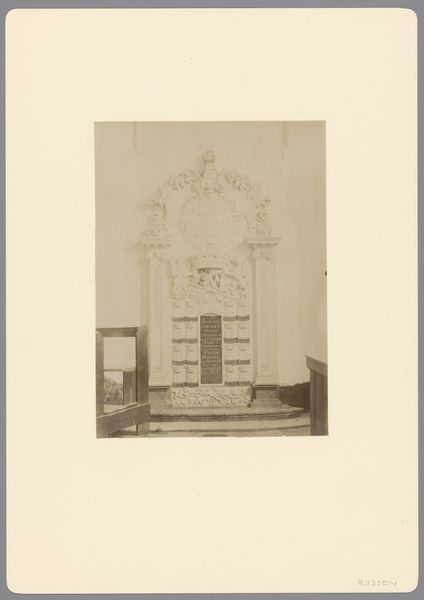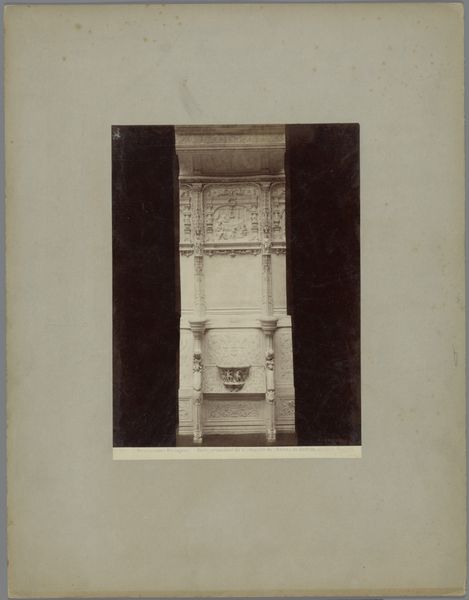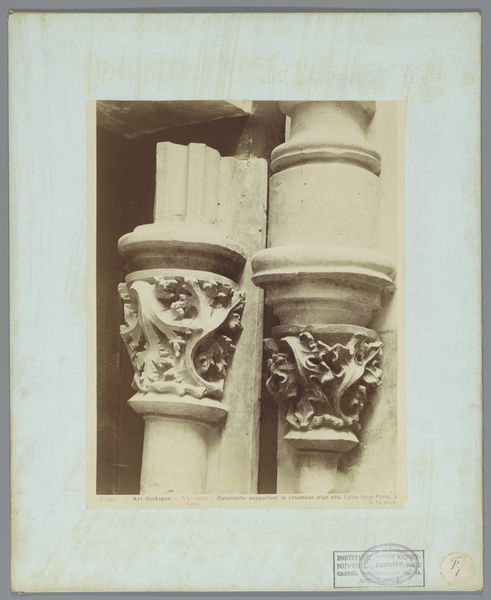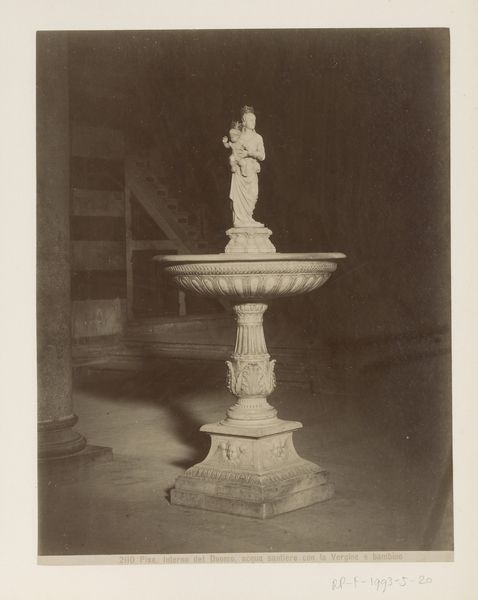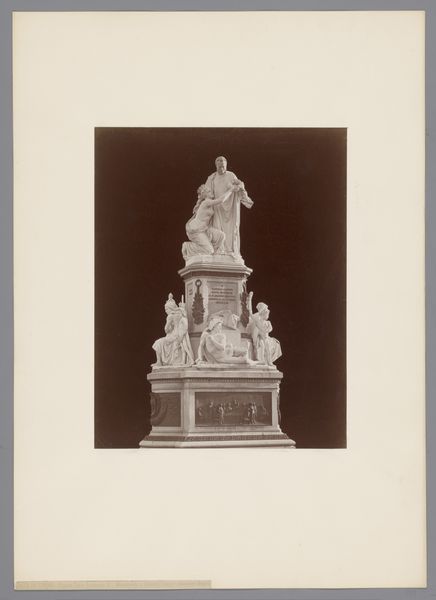
Zuil met scheepsboegen in de Capitolijnse Musea te Rome c. 1857 - 1875
0:00
0:00
photography, sculpture, gelatin-silver-print
#
portrait
#
classical-realism
#
photography
#
ancient-mediterranean
#
column
#
sculpture
#
gelatin-silver-print
#
19th century
#
statue
Dimensions: height 259 mm, width 205 mm
Copyright: Rijks Museum: Open Domain
Editor: This is a gelatin-silver print photograph taken by James Anderson between 1857 and 1875, depicting a column adorned with ship prows in the Capitoline Museums in Rome. It has a somber mood due to the monochrome and the age of the artifact. What strikes you about this photograph? Curator: It’s fascinating how Anderson uses photography to document and almost monumentalize this relic. The column, laden with rostra – the rams of captured warships – speaks volumes about Roman imperial power and dominance. But consider: whose stories are missing here? Editor: What do you mean? Curator: This isn’t just a column; it’s a visual embodiment of victory, crafted from the spoils of war. But where are the voices of those who were conquered? Their perspectives are silenced, erased from this narrative of triumphalism. What do you see in the photograph itself that suggests this erasure? Editor: Well, the inscription at the bottom is weathered and hard to read, perhaps signifying the gradual loss of those narratives over time. Curator: Exactly! The column, frozen in a photographic instant, encourages us to interrogate whose history is being told and at what cost. This is not just a neutral depiction of a classical object but a charged representation of power dynamics. How does viewing it this way change your perception? Editor: I see it now! It's a stark reminder that history is written by the victors, and it's our responsibility to seek out the missing narratives. Curator: Precisely. By engaging critically with these historical depictions, we can challenge established power structures and promote a more inclusive understanding of the past.
Comments
No comments
Be the first to comment and join the conversation on the ultimate creative platform.
